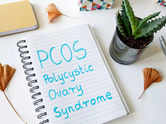01/6Benefits of skin-to-skin contact between mother and baby


But there's one more thing that can particularly benefit you and your child. According to research skin-to-skin contact with the baby can provide several health benefits to not just the newborn but also to the mother.
Also read: Should you give water to your newborn baby or just milk will suffice?
02/6How skin-to-skin contact between mother and baby works



03/6When can you start?



The American Academy of Pediatrics (AAP) recommends skin-to-skin contact between mom and baby immediately after birth when the mom is awake and stable. According to the health body, the practice should be at least an hour long and all the urgent procedures and tests should be done in this position only.
Also read: Neonatologist explains how they saved a premature baby girl born in just 6 months, weighing only 400 gm!
04/6Ways it benefits the baby



05/6What it means for the mother



In mothers, it also helps balance out the hormones associated with lactation, improving breast milk production and encouraging a positive breastfeeding. Research has also said that mothers who perform skin-to-skin contact with babies also have a lower risk of postpartum depression.
06/6A dad's guide to skin-to-skin contact with the baby



Besides helping you develop a stronger bond with your baby, you are also likely to feel more confident as a father. Furthermore, you are as capable of making your newborn feel safe, helping in regulating their body temperature and their heartbeat.





















































closecomments
SIGN IN WITH
GoogleEmail